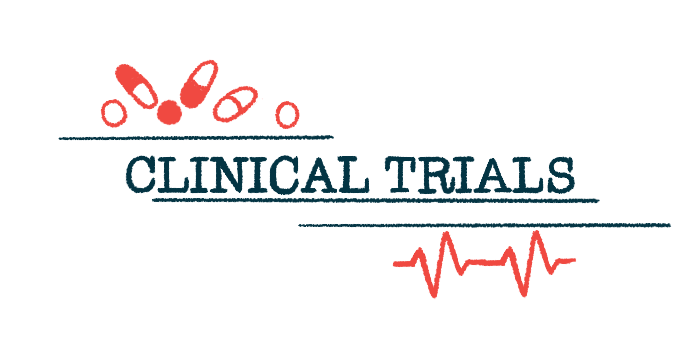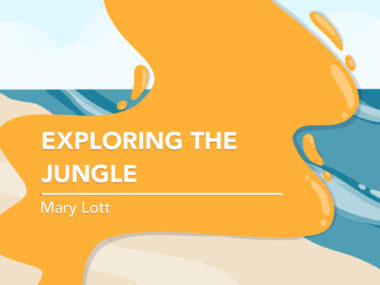Enjaymo over 2.5 years seen to reduce anemia, fatigue in CAD
New Phase 3 trial data from CARDINAL show benefits of long-term treatment
Written by |

Long-term treatment with Enjaymo (sutimlimab-jome) in people with cold agglutinin disease (CAD) results in rapid and sustained reductions in red blood cell destruction and anemia, as well as clinically-meaningful reductions in fatigue.
That’s according to 2.5 years of data from the Phase 3 CARDINAL clinical trial, which tested the now-approved CAD treatment in patients given blood transfusions.
The trial’s full results were reported in a study titled “Sustained inhibition of complement C1s with sutimlimab over 2 years in patients with cold agglutinin disease,” published in the American Journal of Hematology. The work was funded by Sanofi, which markets Enjaymo.
“This study has demonstrated a continued favorable, long-term risk-benefit profile of [Enjaymo] for the management of patients with CAD over 2 years,” the researchers wrote.
Enjaymo was 1st therapy approved in US for CAD
CAD is caused by the immune system wrongly attacking and destroying red blood cells at low temperatures. A loss of red blood cells, which carry oxygen through the bloodstream, leads to anemia, which deprives tissues of oxygen.
Enjaymo is an antibody-based therapy that works to block the activation of the classical complement pathway, a part of the immune system that plays a critical role in this autoimmune attack.
Early last year, Enjaymo became the first therapy approved for CAD in the U.S. While the initial indication covered only CAD patients who had previously received blood transfusions, it was expanded earlier this year to also cover those who have never received blood transfusions. The therapy also is available for CAD patients, regardless of transfusion status, in the European Union.
Approvals of Enjaymo were based partly on data from a two-part Phase 3 trial called CARDINAL (NCT03347396), which evaluated the therapy in 24 adults with CAD who had a recent history of blood transfusions.
About two-thirds of participants were women, and their median age was in the early 70s. All received an into-the-vein (intravenous) infusion of a weight-based dose of Enjaymo once a week for the first two weeks, and every other week thereafter.
Results from the study’s first part, which lasted about six months, showed that Enjaymo prevented red blood cell destruction (hemolysis) and lessened anemia, with patients reporting better quality of life and less fatigue.
Enjaymo treatment led to rapid improvement for patients
After completing CARDINAL’s first part, 22 of the participants — all but two — continued into its second portion, where they were treated with Enjaymo for another two years. In total, these patients received the therapy for about 2.5 years. About 80% of the participants (19 patients) finished the full trial.
Prior to starting on Enjaymo, most patients had anemia, as evidenced by an average hemoglobin level of 8.6 g/dL. Hemoglobin is the protein that red blood cells use to carry oxygen through the blood; the normal range is 12 to 16 g/dL for female patients and 14 to 18 g/dL for male patients.
Within the first week of treatment, the patients’ hemoglobin level increased by a mean of 1.35 g/dL. Levels above 11 g/dL were detected as early as the fifth week — and sustained up to 2.5 years.
At the most recent assessment, the average level was 12.23 g/dL, according to the researchers.
Multiple biomarkers of hemolysis also showed reductions with long-term Enjaymo treatment. Particularly, bilirubin levels decreased in the first week of treatment and became normalized from as early as week 3.
In addition, the proportion of patients experiencing any symptoms of anemia — such as fatigue, weakness, shortness of breath, palpitations, rapid heartbeat, lightheadedness, and/or chest pain — was reduced from 72.7% at study’s start to 45% or less with Enjaymo treatment.
Patient-reported fatigue was measured using a standardized tool called Functional Assessment of Chronic Illness Therapy (FACIT)-Fatigue Scale; lower scores on this measure reflect worse fatigue.
Before starting on Enjaymo, patients’ average FACIT-Fatigue score was 32.4 points. Fatigue scores improved rapidly after the therapy was started, and by the end of the trial the average score had improved by more than eight points to 40.5.
Also, “improvements in [hemoglobin], bilirubin, and FACIT-Fatigue correlated with near-complete inhibition of [classic complement pathway] activity,” the team wrote.
Collectively, these data “demonstrate that the rapid effects of [Enjaymo] treatment on hemolysis, anemia, and quality of life are sustained long term in patients with CAD who continue with therapy,” the researchers wrote.
Data show CAD recurrence after treatment was stopped
After 2.5 years on treatment, participants completed about two months of monitoring during which they stopped receiving Enjaymo. Data from this time period suggested that hemoglobin levels decreased. Meanwhile, after the therapy was stopped, markers of hemolysis increased and fatigue scores worsened.
“In the 9-week follow-up period after cessation of [Enjaymo] treatment … hemolytic markers and fatigue scores approached [pre-Enjaymo] values, indicating the recurrence of CAD after treatment discontinuation,” the researchers wrote.
Over the course of the trial, two patients experienced serious side effects deemed related to Enjaymo. One individual had bleeding into the eyeball and another had a viral infection.
About 1 in 3 patients (31.8%) experienced a serious infection while on the immunosuppressive therapy; the researchers noted that most of these patients also had other risk factors predisposing them toward infections.
Two patients died during the nine-week off-treatment follow-up period, but none of the deaths were deemed related to treatment.
“Overall, [Enjaymo] was generally well tolerated over 2 years of treatment,” the researchers wrote, adding that safety data from the trial were “generally consistent with an older, medically complex population.”
“In conclusion, the CARDINAL 2-year results provide evidence of sustained [Enjaymo] effects for CAD management, but that disease activity reoccurs after treatment cessation,” the team wrote.








